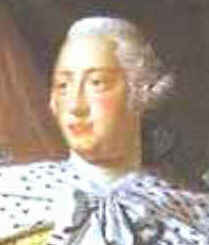 On
a June 04:
On
a June 04:2003 To the tiny (10 employees) Swedish biopharmaceutical company Oxigene Inc. (OXGN)
the US Food and Drug Administration gives fast-track status for the tumor-starving compound, Combretastatin A4 Prodrug, currently in Phase II studies for the treatment of anaplastic thyroid cancer, for which there is no current treatment. On the NASDAQ, of the 12.7 million OXGN shares, 12.1 million OXGN share-transactions are made (presumably some of the shares being traded several times during the day), surging from their previous close of $3.94 to an intraday high of $7.85 and closing at $7.23. They had traded as low as $0.78 as recently as 26 December 2002 and as high as $26.00 on 06 March 2000.. [5~year price chart >] On 27 May 2003 Oxigene had announced that it was forming a partnership with the charity Cancer Research UK to complete the preclinical and phase I trials of its compound OXi4503, also designed to shut down the flow of blood to a tumor and starve it. On that day 5.3 million OXGN shares were traded, surging from their previous close of $2.80 to an intraday high of $4.60 and closing at $4.35.
2003 To promote the 01 May 2003 revised “Road Map” to a solution of the Israeli-Palestinian conflict, US-imposed Palestinian Premier Mahmmoud Abbas meets in Aqaba on 04 June with his Israeli counterpart war-criminal Ariel Sharon and US usurper-President “Dubya” Bush. The three make statements which are obnoxious to Israeli extremist settlers and, even more so, to the majority of Palestinians. Abbas vows to fight terrorism but says nothing about the Right of Return, Sharon promises to remove the “illegal outposts” but says nothing of the settlements which his government promotes, Dubya says that he will send an observer mission and train “a new Palestinian security service”, and that he is committed “to Israel's security as a vibrant Jewish state.” Non-Jewish Israelis are not reassured by such vibrations, nor are Palestinians by the prospect of a secret police organized by the CIA,
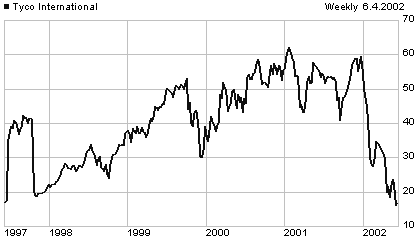 2002
2002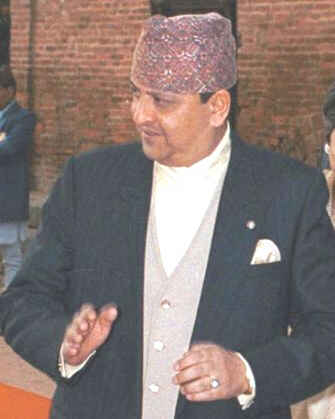 2001
2001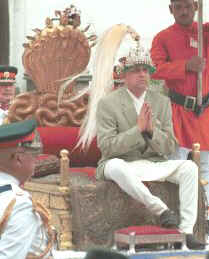 After parricide King Dipendra of Nepal dies early in the morning, ending
his 3-day comatose reign on life support, his uncle, regent-for-3 days Prince
Gyanendra Bir Bikram Shah Dev [December 2000 photo >],
becomes king and is enthroned at 11:00 [< photo].
After parricide King Dipendra of Nepal dies early in the morning, ending
his 3-day comatose reign on life support, his uncle, regent-for-3 days Prince
Gyanendra Bir Bikram Shah Dev [December 2000 photo >],
becomes king and is enthroned at 11:00 [< photo].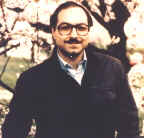 1986
1986
